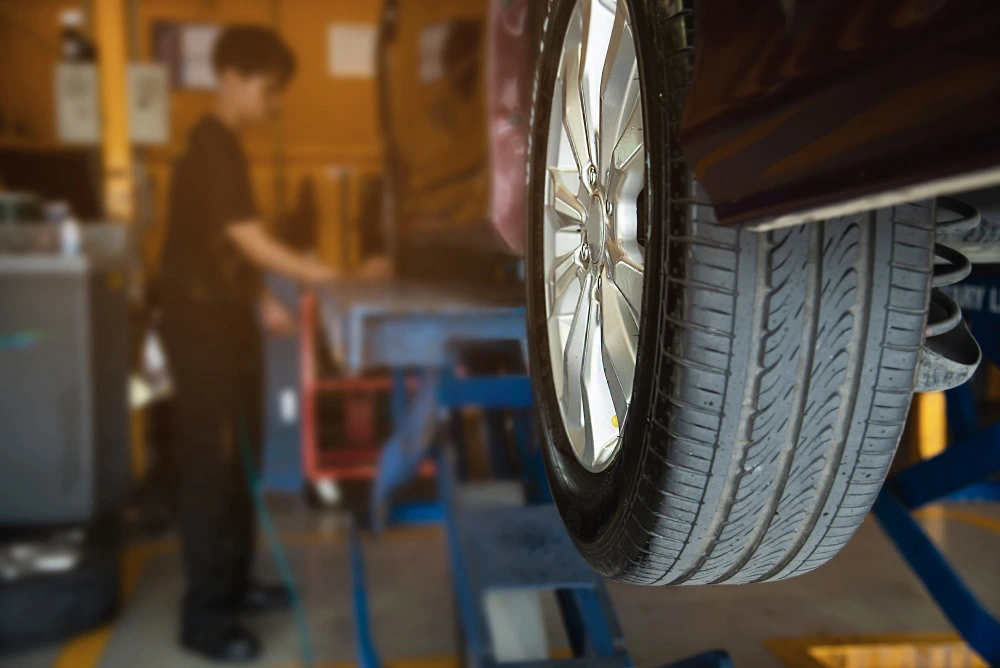Table of Contents
quick answer
A typical wheel alignment for a standard passenger car usually takes about 30 to 60 minutes, but the duration may vary based on several factors.
introduction
When it comes to maintaining the health and longevity of your vehicle, wheel alignment plays a crucial role. If you’ve noticed that your car pulls to one side or if your tires are wearing out unevenly, it’s time to get an alignment check. But one question often arises is, “How long does an alignment take?” Whether planning to squeeze it into your busy day or just curious about the process, this article will provide all the insights you need. We’ll explore the process, time estimates, and factors that could affect the duration of a wheel alignment.
What is Wheel Alignment?
Before diving into the timeline, it’s essential to understand what wheel alignment is and why it matters. Wheel alignment, sometimes called tire alignment, involves adjusting the angles of your car’s wheels so they are perpendicular to the ground and parallel. This ensures that your vehicle drives straight and your tires wear evenly.
The key aspects of wheel alignment include:
- Camber: The tire angle when viewed from the front of the vehicle.
- Toe: The extent to which your tires turn inward or outward when viewed from above.
- Caster: The angle of the steering axis when viewed from the side of the vehicle.
A proper alignment ensures that your vehicle performs optimally, maximizing tire life and fuel efficiency while providing a smoother, safer ride.
Why is Wheel Alignment Important?
Proper wheel alignment affects the tires and the entire driving experience. Here are some of the primary reasons why getting your wheels aligned is essential:
- Improved Tire Lifespan: Misaligned tires wear unevenly, so you’ll have to replace them sooner than necessary.
- Better Fuel Efficiency: Poor alignment causes more friction between the tires and the road, leading to higher fuel consumption.
- Smooth Driving: Proper alignment ensures a smoother, more stable ride without pulling or vibrations.
- Enhanced Safety: Misaligned wheels can cause issues with steering and handling, posing a safety risk, especially at high speeds.
Now that you understand its importance, let’s move on to how long the process takes.
Average Time for a Wheel Alignment
Usually, a standard wheel alignment for a typical passenger car will take around 30 to 60 minutes. However, this time can vary depending on several factors, such as the condition of your vehicle, the type of alignment service you require, and the technician’s expertise performing the job.
Let’s break down these factors:
- Type of Alignment: There are generally two types of wheel alignments: two-wheel alignment and four-wheel alignment.
- Two-Wheel Alignment: This service is performed only on the vehicle’s front wheels, making it quicker. It usually takes around 30 minutes.
- Four-Wheel Alignment: This service adjusts all four wheels and typically takes around 45 to 60 minutes.
- Condition of the Vehicle: Suppose your vehicle is in good condition and you’ve kept up with regular maintenance. In that case, the alignment process will likely go smoothly. However, suppose there are worn-out parts, such as tie rods or ball joints. In that case, the technician might need extra time to replace these components before proceeding with the alignment. In such cases, the alignment could take over an hour.
- Type of Vehicle: Different vehicles require different alignment methods. For example, a compact car will take less time to align than a heavy-duty truck or SUV. Vehicles with modified suspensions or custom settings may also take longer to align due to the complexity of the adjustments.
- Technician Expertise: The technician’s skill level plays a significant role. A highly experienced technician will likely complete the alignment faster and more efficiently. Most professional auto repair shops employ qualified technicians who can handle the alignment process swiftly without compromising accuracy.
- Alignment Tools and Equipment: Shops equipped with advanced, computerized alignment machines can perform the process more efficiently. These machines provide precise measurements and adjustments, speeding up the process compared to older, manual methods.
Steps Involved in a Wheel Alignment
Understanding the steps involved in wheel alignment can help you better understand why the process takes the time it does.

- Pre-Inspection: Before starting, the technician will inspect your vehicle’s suspension and steering components. This ensures there are no damaged parts, such as worn-out bushings or ball joints, that could affect the alignment. If any parts need replacing, this will add time to the process.
- Mounting the Vehicle: Once the pre-inspection is complete, your vehicle will be driven onto a specialized alignment rack. The technician will then secure the car to ensure it remains stationary during the alignment.
- Checking the Current Alignment: Next, the technician will attach sensors to each wheel, which are linked to the alignment machine. These sensors measure the camber, toe, and caster angles and compare them to the manufacturer’s specifications.
- Making Adjustments: After reviewing the results, the technician will adjust the angles to bring them back into proper alignment. This can involve adapting the suspension components or even replacing parts if needed.
- Test Drive: Once the adjustments are made, the technician may take the vehicle for a short test drive to ensure that everything is working correctly and that the alignment is perfect. If the car passes the test drive, the alignment is complete.
How Often Should You Get an Alignment?
Now that you know how long an alignment takes, another important question arises: How often should you get one?
In general, you should have your wheels aligned:
- Every two to three years, depending on your driving habits and road conditions.
- After replacing your tires.
- After hitting a large pothole or curb, this can knock your wheels out of alignment.
- If you notice your car pulling to one side or uneven tire wear.
Regular wheel alignments can save you money in the long run by extending the life of your tires and improving your vehicle’s overall performance.
Signs You Need a Wheel Alignment
Does your car need an alignment? Here are some telltale signs that it’s time to schedule an appointment:
- Uneven Tire Wear: This is a classic sign of misalignment if your tires are wearing out unevenly, with more tread on one side than the other.
- Vehicle Pulls to One Side: If your car consistently pulls to the left or right while driving straight, it’s time for an alignment.
- Steering Wheel Off-Center: If your steering wheel isn’t centered when driving straight, it may indicate misaligned wheels.
- Vibrations While Driving: Misalignment can cause vibrations in the steering wheel, especially at higher speeds.
- Noisy Steering: If your steering system makes unusual noises when turning, this could be a sign of misalignment or another issue.
Can You DIY a Wheel Alignment?
Many vehicle owners wonder if they can perform a wheel alignment at home. While minor adjustments, like checking tire pressure, can be done in your garage, a proper wheel alignment requires specialized tools and expertise. Attempting to perform a DIY alignment without the right equipment can result in improper adjustments, worsening the problem and leading to costly repairs down the road. It’s always best to leave this task to a professional.
How Much Does a Wheel Alignment Cost?

In addition to time, cost is another factor to consider. On average, a standard wheel alignment can cost anywhere from $75 to $150, depending on your location, the type of vehicle, and whether you’re getting a two-wheel or four-wheel alignment. If additional repairs or adjustments are needed, such as replacing worn suspension parts, this could increase the overall cost.
Many shops also offer lifetime alignment packages, allowing you to align your wheels as many times as needed for a one-time fee. This option could be cost-effective if you drive frequently or on rough roads.
Conclusion
So, how long does a wheel alignment take? Usually, a standard alignment will take around 30 to 60 minutes, depending on factors such as the type of alignment, vehicle condition, and the technician’s expertise. Regular alignments are crucial for extending the life of your tires, improving fuel efficiency, and ensuring a safe, smooth driving experience. While the process is quick, its benefits last a long time, making it well worth the investment.
If you notice any signs of misalignment or if it’s been a while since your last service, don’t hesitate to schedule an appointment with a professional mechanic to keep your vehicle in top shape.







